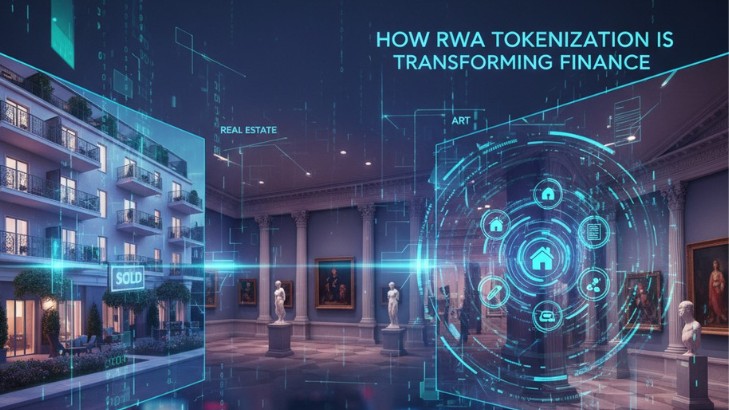The rise of equity crowdfunding in real estate
January 23, 2023



Real Estate Equity Crowdfunding: A New Way to Acquire Investors
Real estate equity crowdfunding is a form of investment that allows individual investors to pool their money together to purchase as take in a real estate project or property.
It is a relatively new concept that emerged following the JOBS Act of 2012, which loosened regulations on crowdfunding and allowed non-accredited investors to participate in private real estate offerings. Real estate equity crowdfunding platforms provide detailed information on the investment opportunities available, including the property location, property type, projected returns, and the stage of development.
This form of investment can offer potential high-yielding returns, diversify an investment portfolio, and provide a more transparent and accessible way for individual investors to research and understand the real estate investment opportunities available to them. However, it is important to note that real estate equity crowdfunding is still a relatively new concept and there may be risks and uncertainties associated with it.
What are the potential benefits of Real Estate Crowdfunding:
- Allows for a wider pool of investors to participate in real estate investments: Prior to the JOBS Act of 2012, only accredited investors (those with a net worth of over $1 million or an annual income of over $200,000) were allowed to invest in private real estate offerings. Equity crowdfunding now allows non-accredited investors to participate in these types of investments as well, expanding the pool of potential investors.
- Can provide access to potentially high-yielding investment opportunities: Real estate investments can provide higher returns than traditional stocks and bonds, and equity crowdfunding allows for investment in specific real estate projects or properties, rather than having to invest in a whole REIT or real estate development company. According to a study by the Cambridge Centre for Alternative Finance, the average annual return for real estate crowdfunding in the US was 12.9% in 2017.
- Can offer a more diverse investment portfolio: Adding real estate investments to a portfolio can provide a different type of return and risk profile compared to traditional stocks and bonds. Real estate investments can offer a level of stability and consistent cash flow that can diversify an investor's portfolio.
- Can facilitate investment in specific real estate projects or properties: Real estate equity crowdfunding allows investors to invest in specific projects or properties, rather than having to invest in a whole REIT or real estate development company. This can provide more control and transparency for the investor, as they can see exactly where their money is being invested.
- Can provide a more transparent and accessible way for individual investors to research and understand the real estate investment opportunities available to them: Real estate equity crowdfunding platforms provide detailed information on the investment opportunities available, including the property location, property type, projected returns, and the stage of development. This can make it easier for individual investors to research and understand the risks and potential returns associated with a specific investment.
- Can offer a more liquid form of real estate investment: Shares in a crowdfunding investment can be bought and sold on a secondary market, providing a more liquid form of real estate investment. This allows investors to quickly and easily liquidate their investment if they need to access their capital, although it is important to note that the secondary market for crowdfunding investments may be less active or illiquid than the stock market.
Which platforms offer Real Estate Crowdfunding in the USA
Fundrise:
Fundrise is one of the most well-known real estate crowdfunding platforms in the USA. It offers a variety of real estate investment options, including eREITs (electronic Real Estate Investment Trusts) and eFunds (electronic funds). These investment options allow investors to invest in a diverse portfolio of properties, including commercial and residential properties, without having to go through the process of purchasing a property themselves. Fundrise also offers a personalized investment portfolio feature, which allows investors to tailor their investments to their personal goals and risk tolerance. Fundrise has a $500 minimum investment and charges a 1% annual management fee.
Invown:
Invown is a real estate crowdfunding platform that allows investors to invest in a variety of commercial and residential properties. The platform offers investments in properties located throughout the USA, and investors can choose to invest in specific properties or in a REIT. Invown has a $5,000 minimum investment.
CrowdStreet:
CrowdStreet is a real estate crowdfunding platform that specializes in commercial properties, including office buildings, retail centers, and multi-family properties. The platform offers investments in properties located throughout the USA, and investors can choose to invest in specific properties or in a REIT. CrowdStreet also offers a secondary market, where investors can buy and sell shares of properties they have invested in. CrowdStreet has a $25,000 minimum investment.
RealtyMogul:
Realty Mogul is a real estate crowdfunding platform that specializes in commercial properties, including office buildings, retail centers, and multi-family properties. The platform offers investments in properties located throughout the USA, and investors can choose to invest in specific properties or in a REIT. Realty Mogul also offers a secondary market, where investors can buy and sell shares of properties they have invested in. Realty Mogul has a $5,000 minimum investment.
Roofstock:
Roofstock is a real estate crowdfunding platform that focuses on single-family rental properties. The platform offers a variety of investment options, including turnkey properties, properties in need of renovation, and properties that are already generating income. Roofstock also offers a property management service to help investors manage the properties they have invested in. Roofstock has a $5,000 minimum investment.
Risks with Real Estate Equity Crowdfunding:
Real estate equity crowdfunding, like any investment, carries certain risks. Here are some potential risks associated with real estate equity crowdfunding:
- Lack of regulation: Real estate equity crowdfunding is a relatively new concept and is not yet as heavily regulated as traditional forms of real estate investment. This can increase the risk of fraud or mismanagement.
- Lack of liquidity: Shares in a crowdfunding investment may be difficult to sell on the secondary market, which can make it difficult for investors to liquidate their investments.
- Lack of transparency: Real estate equity crowdfunding platforms may not provide all the necessary information to make informed investment decisions, which can increase the risk of fraud or mismanagement.
- Limited diversification: Crowdfunding investors may have limited options to diversify their investment portfolio, as they can only invest in the specific opportunities provided by the platform.
- Lack of control: Investors may have limited control over the property or project they are investing in, as the developer or management team is responsible for making decisions about the property.
- Limited access to professional advice:Crowdfunding investors may not have access to the same level of professional advice as traditional real estate investors.
- Risk of default: Real estate investments are subject to the risk of default, which occurs when the borrower is unable to make their loan payments and the property is foreclosed.
Tips to evaluate a real estate investment opportunity
Evaluating a good real estate investment opportunity involves considering a variety of factors to determine the potential return on investment and the level of risk involved. Here are some key steps to consider when evaluating a real estate investment opportunity:
- Research the market: Understand the current market conditions in the area where the property is located, including the demand for rental properties, the vacancy rate, and the average rental rates. This will give you an idea of the property's potential income and the likelihood of finding tenants.
- Analyze the property: Carefully evaluate the property's condition, including the age of the property, the condition of the roof, HVAC, and other systems, and the overall condition of the property.
- Review the financials: Carefully review the property's financial statements, including the income and expenses, and calculate key metrics such as cash flow, capitalization rate, and return on investment.
- Consider the management: Evaluate the property's management, including the current property manager and the quality of the property's tenants.
- Look at the area: Research the area around the property, including the demographics, schools, public transportation, and other amenities. This will give you an idea of the property's potential for long-term appreciation.
- Understand the regulations: Understand the local regulations and laws that may impact the property, such as zoning laws and building codes.
- Consider the Exit strategy: Consider the potential exit strategy for the investment, such as holding the property long-term, flipping it, or renting it out.
- Seek professional advice: Consider seeking the advice of a professional real estate agent or a financial advisor before making a final decision on an investment opportunity.
Know the real estate metrics:
There is no single metric that can be used to evaluate a real estate investment opportunity, as different metrics may be more relevant depending on the specific property and the investor's goals. However, some commonly used metrics that can be useful in evaluating a real estate investment opportunity include:
Cash flow:
This metric measures the amount of cash generated by a property after all operating expenses have been paid. It is calculated by subtracting all expenses, including mortgage payments, property taxes, insurance, and maintenance costs, from the property's gross income. A positive cash flow indicates that the property is generating more income than it is costing to operate, and is generally considered a good indicator of the property's overall financial health.
Capitalization rate (Cap Rate):
This metric is used to measure the potential rate of return on a real estate investment, and is calculated by dividing the net operating income (NOI) by the property's purchase price or value. A higher cap rate generally indicates a better return on investment.
Gross Rent Multiplier (GRM):
This metric is used to compare the price of a rental property to the annual rental income it generates. It is calculated by dividing the purchase price of the property by the annual rental income. A lower GRM indicates a better return on investment.
Debt Service Coverage Ratio (DSCR):
This metric is used to measure a property's ability to generate enough income to cover its debt obligations. Itis calculated by dividing the property's net operating income by the total amount of debt payments. A higher DSCR indicates that the property is generating enough income to cover its debt obligations, and is generally considered a good indicator of the property's overall financial health.
Return on Investment (ROI):
This metric measures the overall return on investment, and is calculated by subtracting the total costs of the investment from the total returns. It is usually expressed as a percentage, anda higher ROI indicates a better return on investment.
Occupancy rate:
This metric measures the percentage of units in a property that are occupied by tenants. A high occupancy rate indicates a strong demand for rental units in the area, and is generally considered a good indicator of the property's overall financial health.
What does the future look like for Real Estate Equity Crowdfunding
The future of real estate equity crowdfunding is uncertain, but it is likely to continue to grow in popularity as more individuals become aware of this investment option. Here are a few potential factors that could shape the future of real estate equity crowdfunding:
Continued growth of the crowdfunding industry: As crowdfunding becomes more mainstream, it is likely that more individuals will become aware of and interested in real estate equity crowdfunding as an investment option.
Increased regulation:As the industry grows, it is likely that regulators will implement stricter rules and oversight to protect investors and ensure the integrity of the market. This could increase investor confidence in the industry and attract more investors.
Advancements in technology:The growth of technology and the internet has made it possible for real estate equity crowdfunding platforms to expand their reach, reach more investors and improve transparency.
Increasing competition: As the industry grows, it is likely that more platforms will enter the market, leading to increased competition and potentially lower fees for investors.
Economic conditions:The real estate market is subject to fluctuations, and economic conditions can have a significant impact on the performance of real estate investments.Economic downturns can lead to lower property values and rental income, making it difficult for investors to recoup their investment.
Understanding the branding and marketing behind these real estate projects is essential, and choosing the right partner to help convey the value proposition of your investment is crucial. For a comprehensive list of experts who can help you make your mark with real estate branding, consider visiting this ranked list of top real estate branding agencies, which could provide you with the insights needed for a successful equity crowdfunding campaign.
Ready to take the next step in your real estate investment journey? Contact the experts at Growth Turbine! Our team is dedicated to helping you navigate the exciting world of equity crowdfunding and make informed decisions. Contact us now to get in touch and start your path to success in the transforming industry of real estate investment.




.avif)



